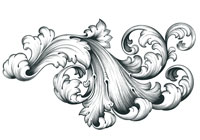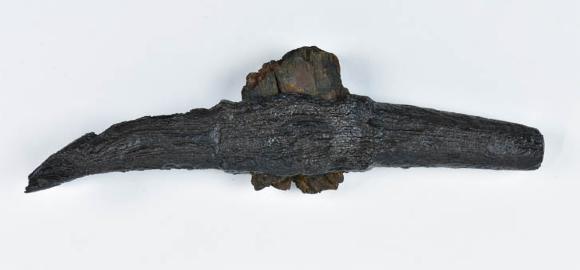 Pedro de Huerta, Carpenter
Pedro de Huerta, Carpenter
Pedro de Huerta was a native of Seville and was given the same name as his father. According to the crew list for the Nuestra Señora de Atocha, he was tall, 21 years old and a native of Seville. He had had smallpox—one of the diseases that many Europeans survived, but most Indigenous people could not. After the rash subsided, de Huerta would have been left with a multitude of small scars as reminders of the pustules that had once covered his face and body. While some cases might have left less scarring, de Huerta bore smallpox scars that were pronounced enough to distinguish him from others on the ship.
He had a vital job. A wooden ship needed constant repair, especially over the course of long voyages. Heat, cold, high winds, storms, and salt water took their toll. In tropical waters, worms fed on the hull, doing ongoing damage.
He would have to repair any damage to the hull or the ship’s boat. He would also fashion specific wooden items, such as planks, anchor stocks, pulley blocks, furniture, or even build cabins. He needed to have a good sense of how a ship operated, as well as how it was constructed, and the role was often filled by men who had once been sailors.
The carpenter on a galleon would have carried a versatile tool kit, consisting of hammers, chisels, saws, axes, adzes, and augers, as well as a supply of spikes and nails. Like many tradesmen, Pedro de Huerta likely had a keen sense of the importance of his tools. Several tools were marked with a simple cipher: XXX. It is possible these tools belonged to Pedro de Huerta. This would ensure that if he misplaced one or loaned it to another sailor, he could easily identify and retrieve it.
He had a vital job. A wooden ship needed constant repair, especially over the course of long voyages. Heat, cold, high winds, storms, and salt water took their toll. In tropical waters, worms fed on the hull, doing ongoing damage.
He would have to repair any damage to the hull or the ship’s boat. He would also fashion specific wooden items, such as planks, anchor stocks, pulley blocks, furniture, or even build cabins. He needed to have a good sense of how a ship operated, as well as how it was constructed, and the role was often filled by men who had once been sailors.
The carpenter on a galleon would have carried a versatile tool kit, consisting of hammers, chisels, saws, axes, adzes, and augers, as well as a supply of spikes and nails. Like many tradesmen, Pedro de Huerta likely had a keen sense of the importance of his tools. Several tools were marked with a simple cipher: XXX. It is possible these tools belonged to Pedro de Huerta. This would ensure that if he misplaced one or loaned it to another sailor, he could easily identify and retrieve it.
